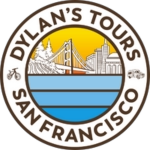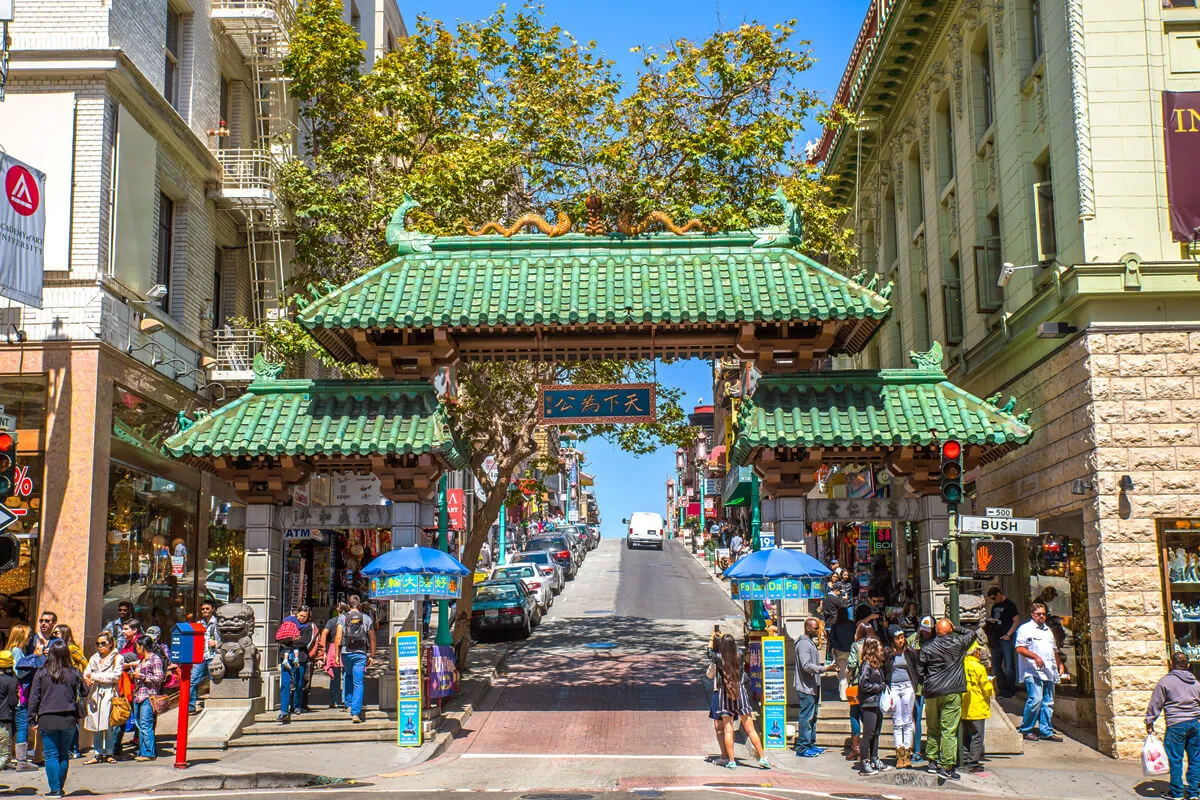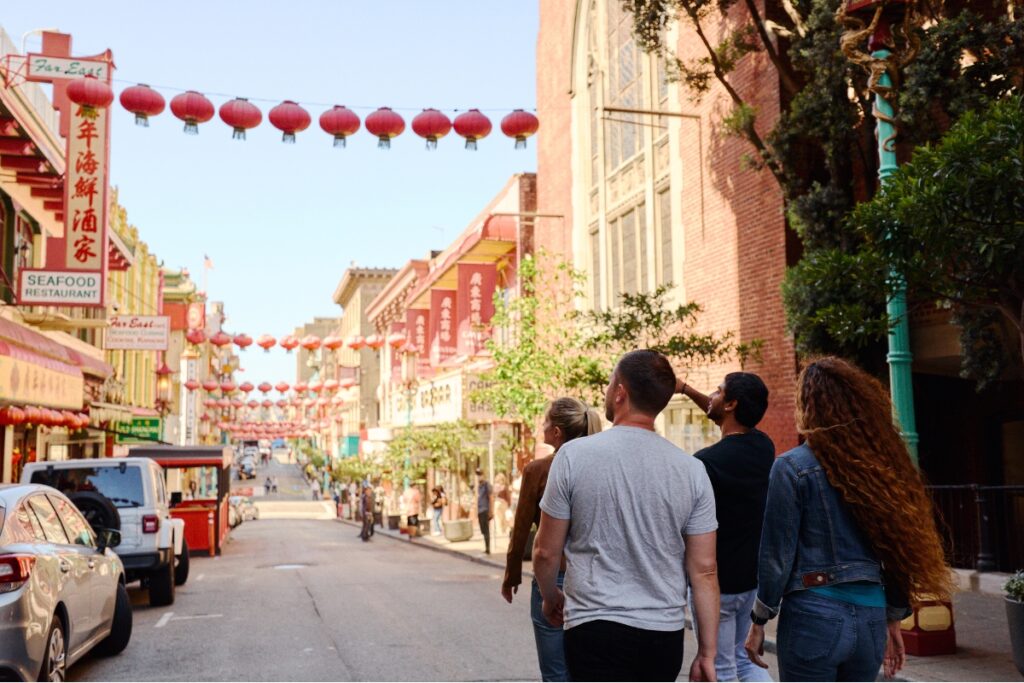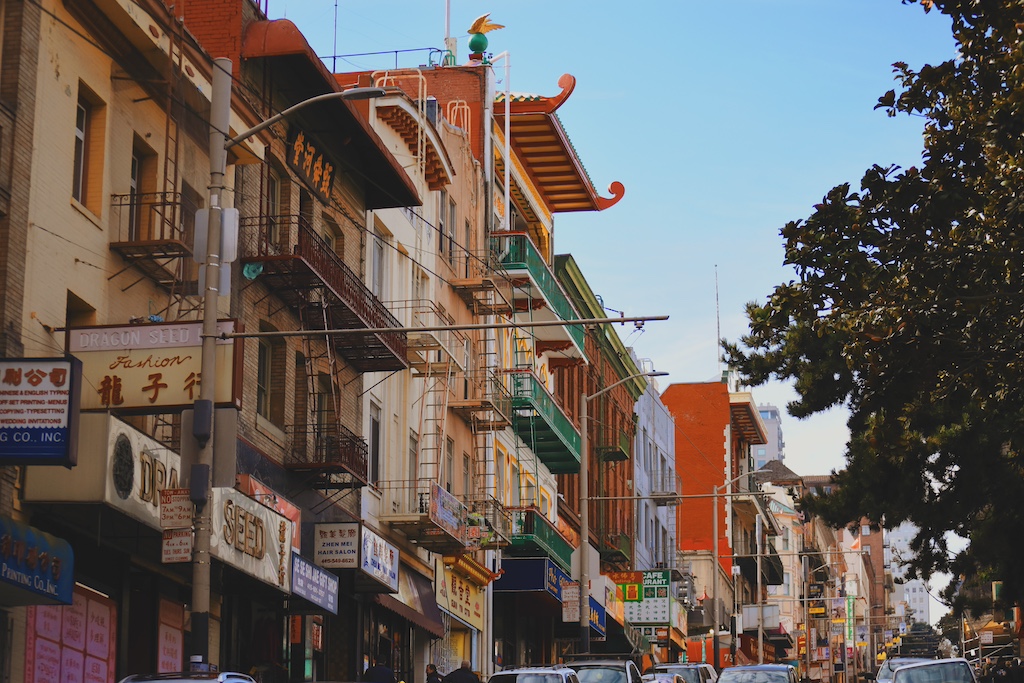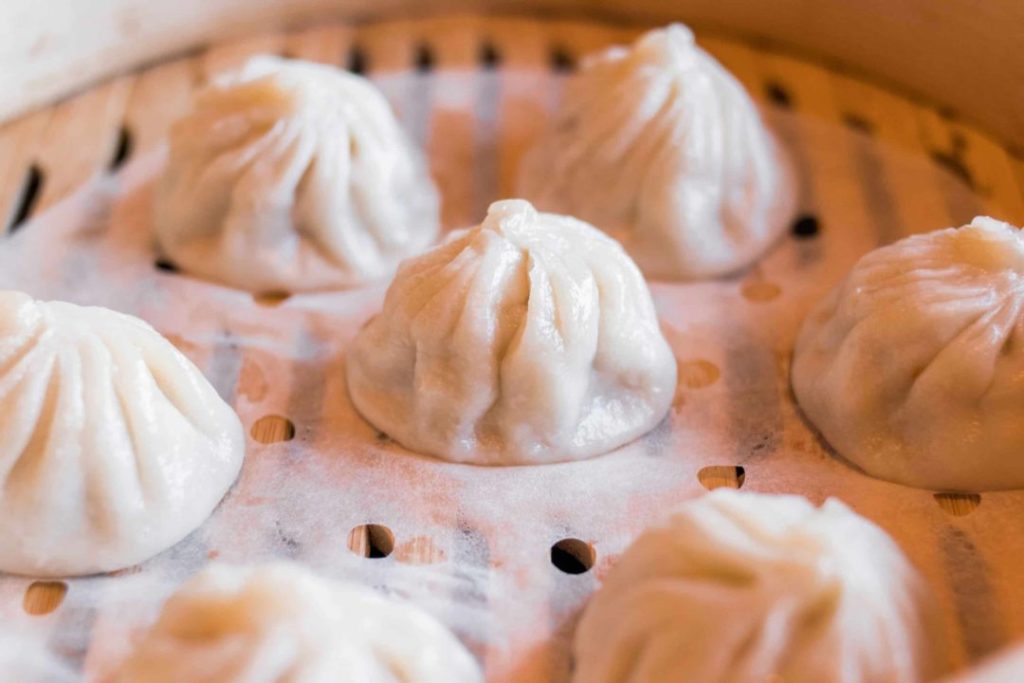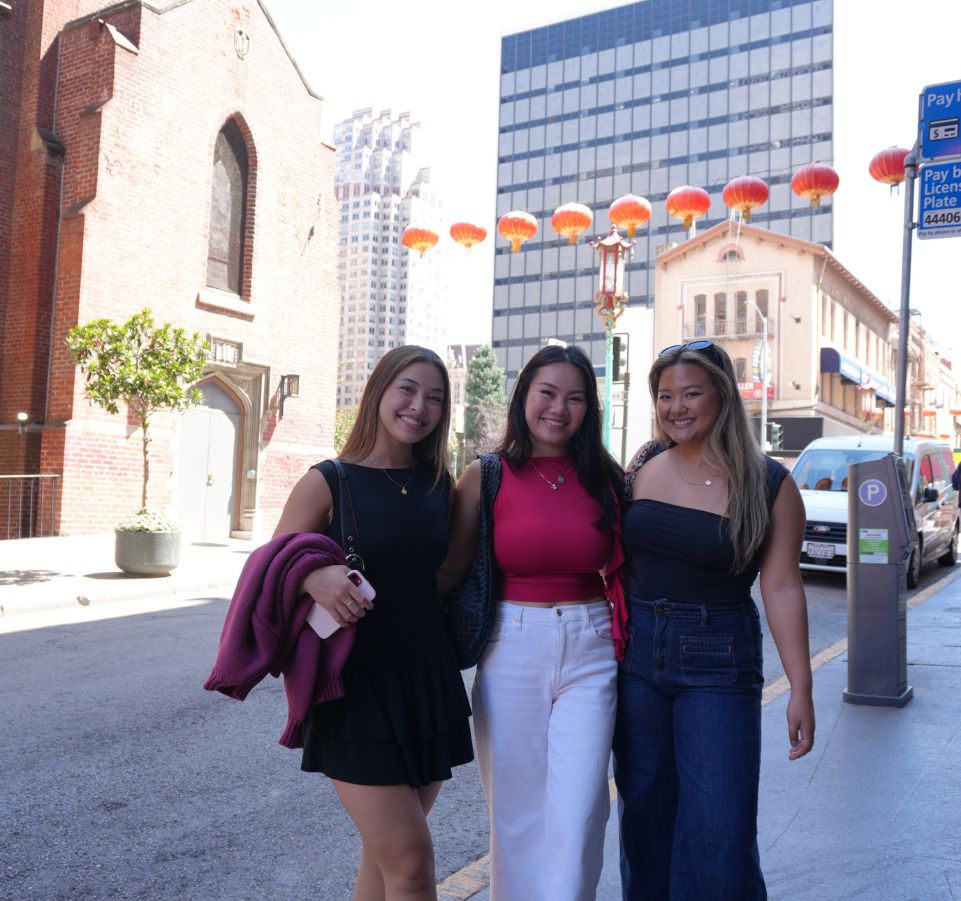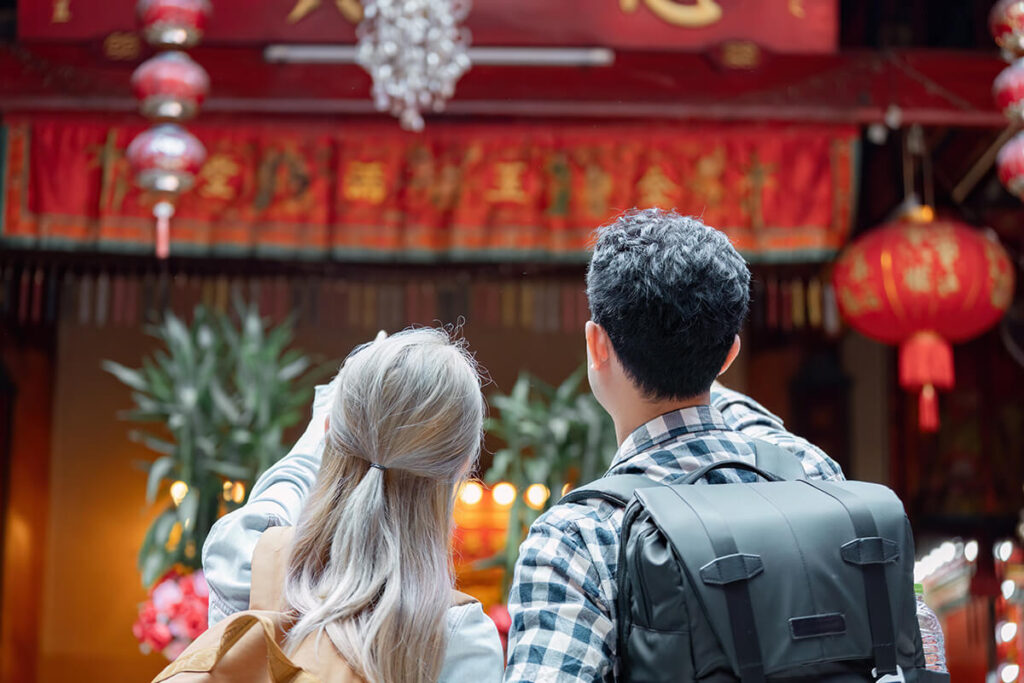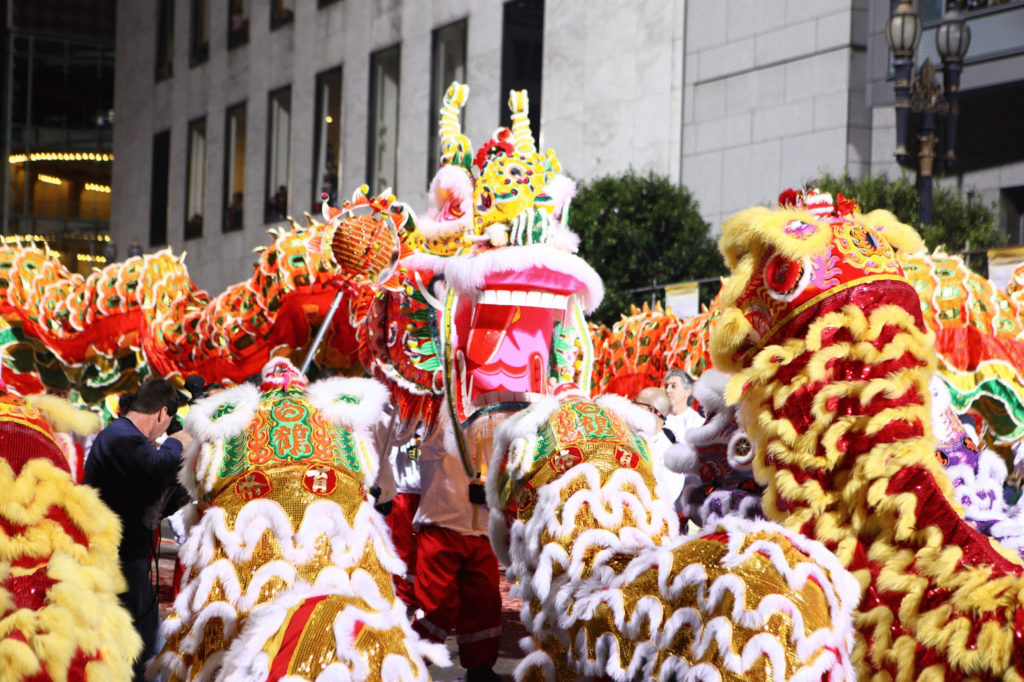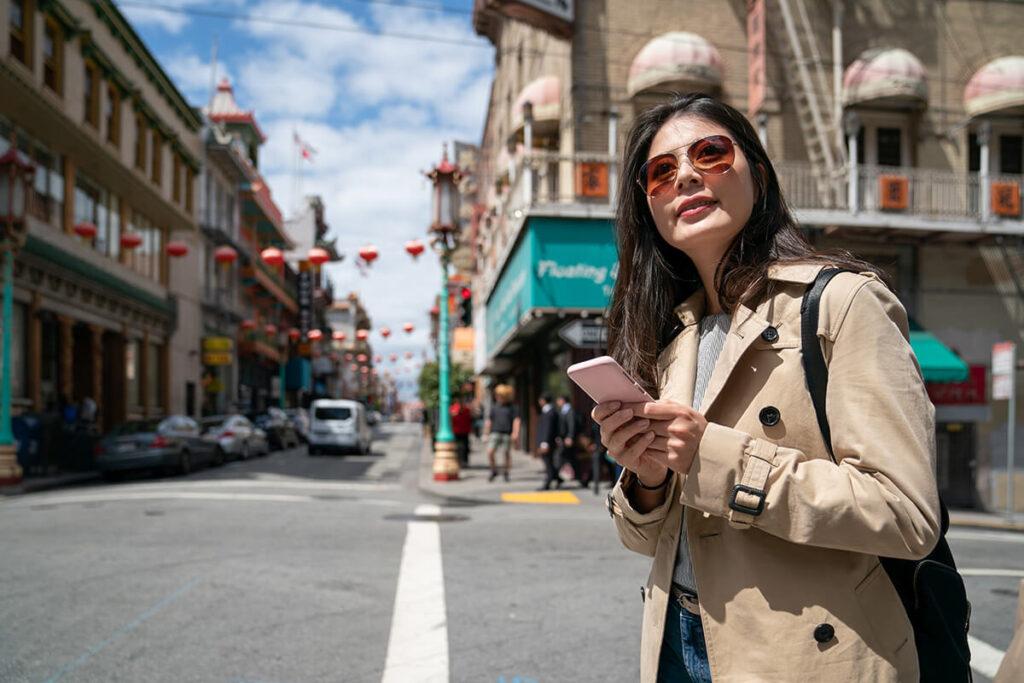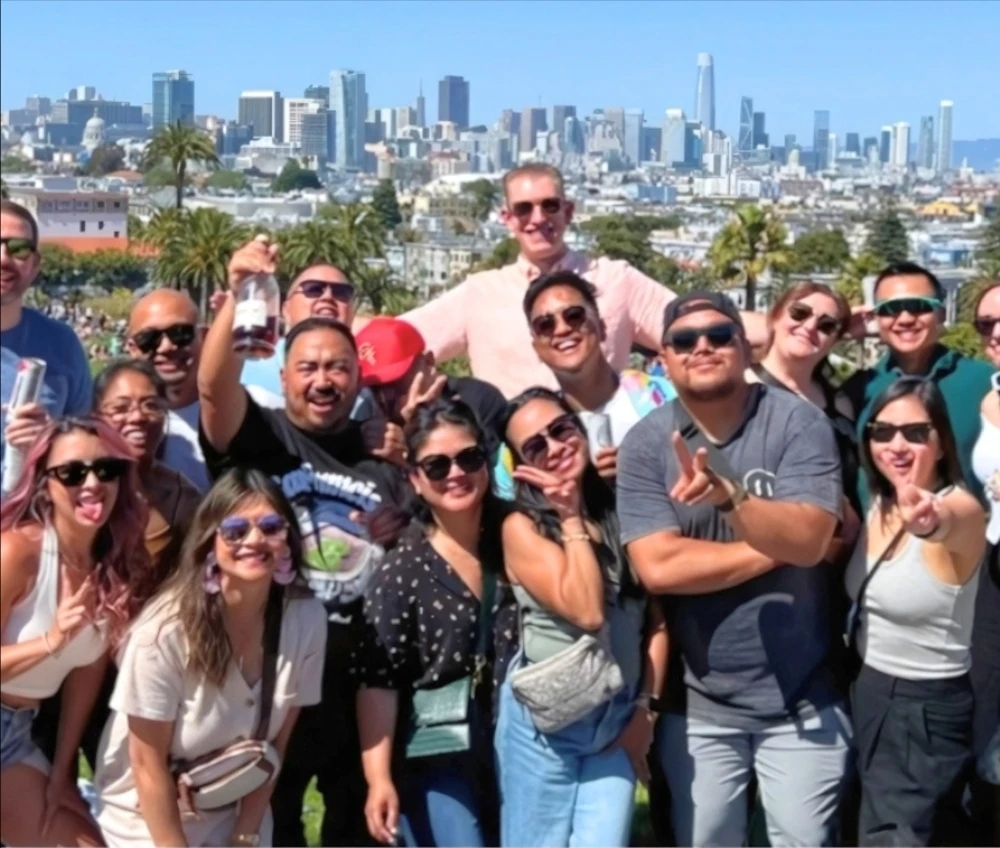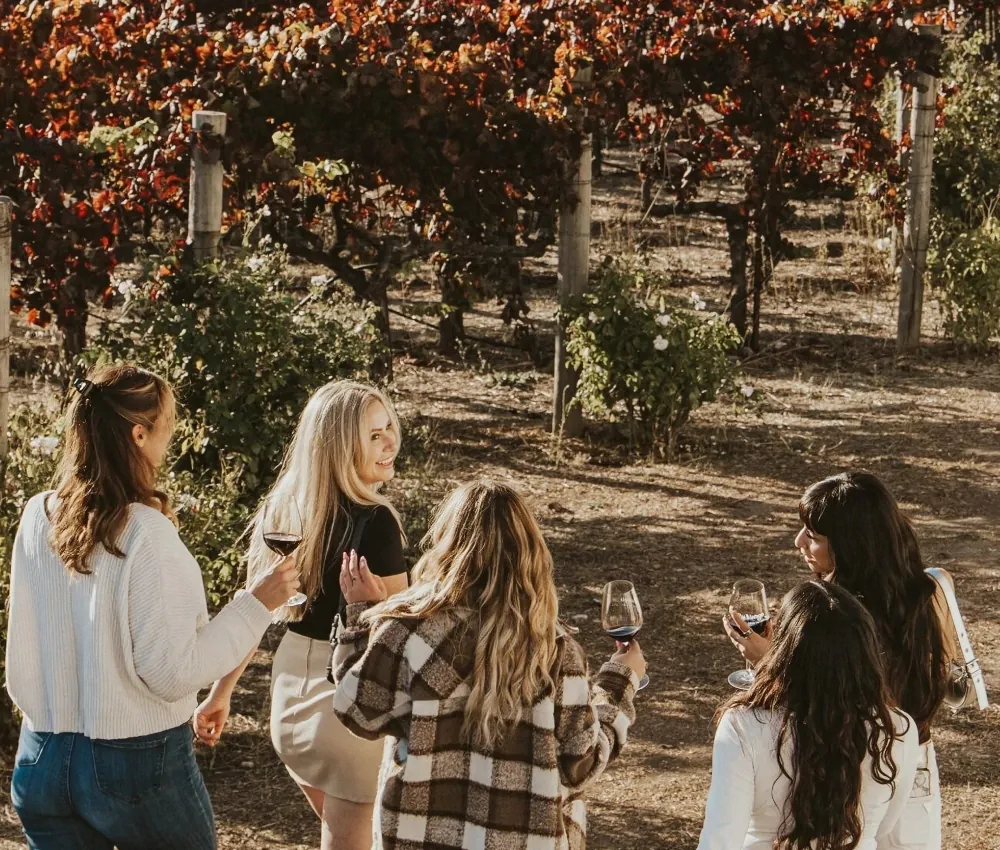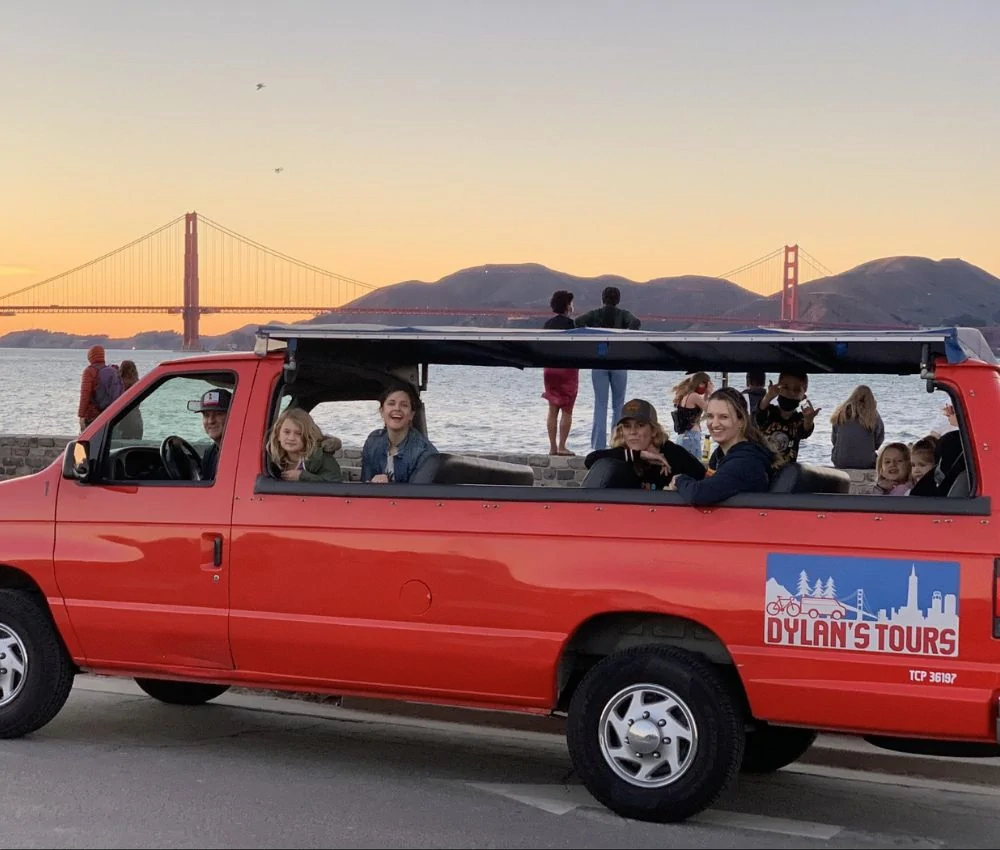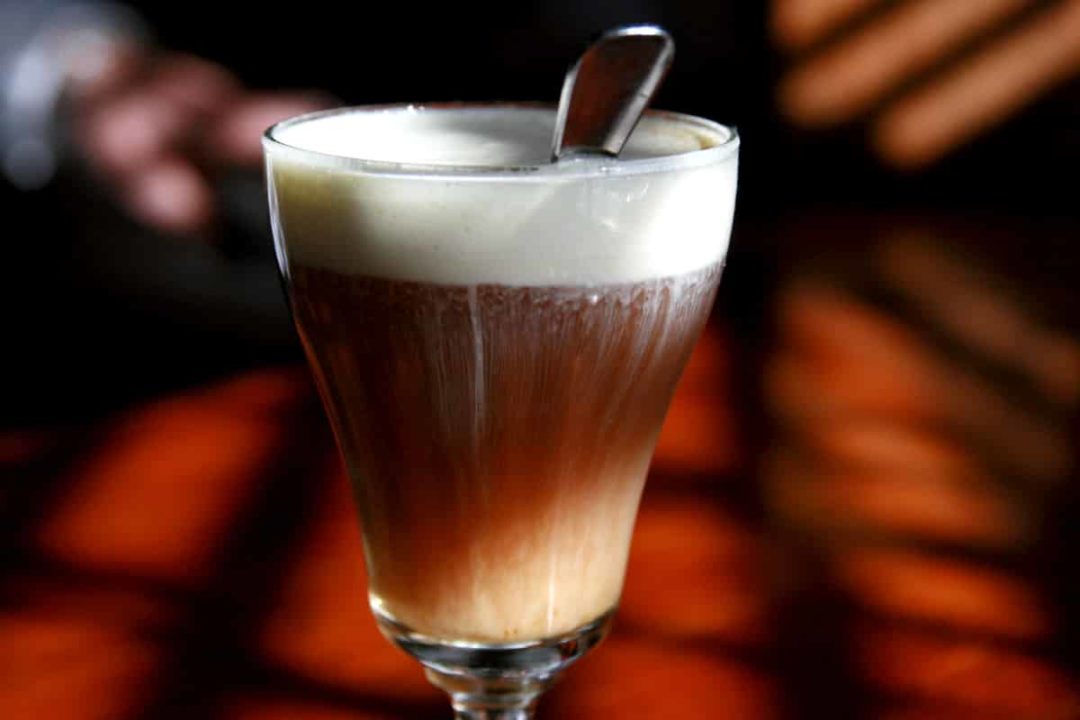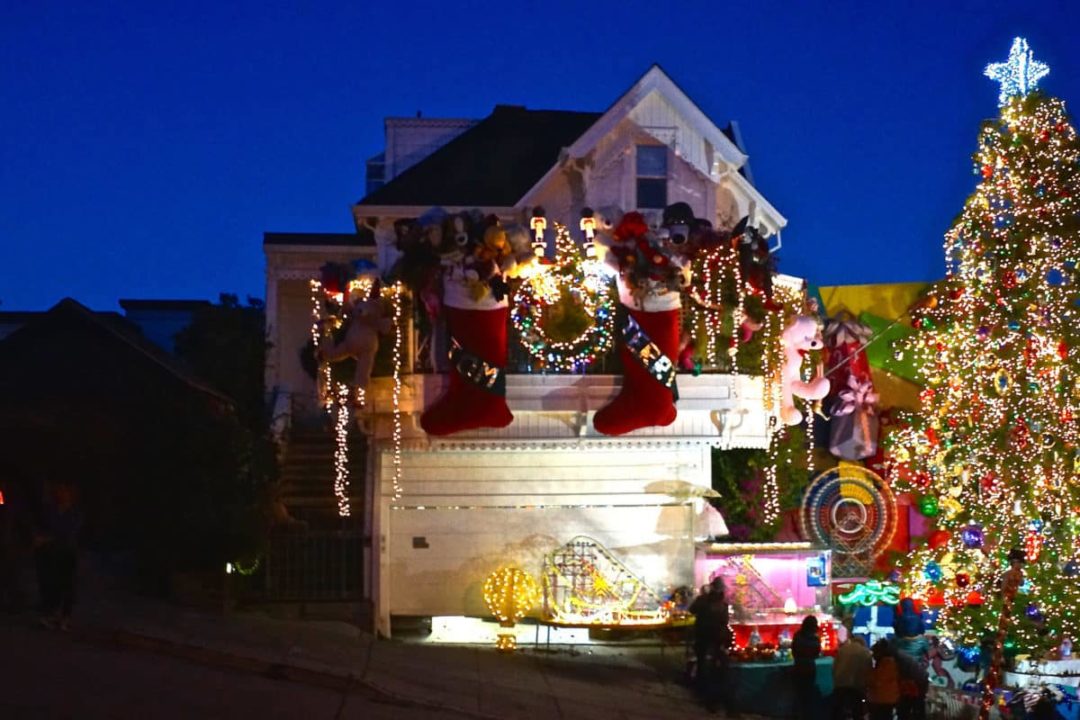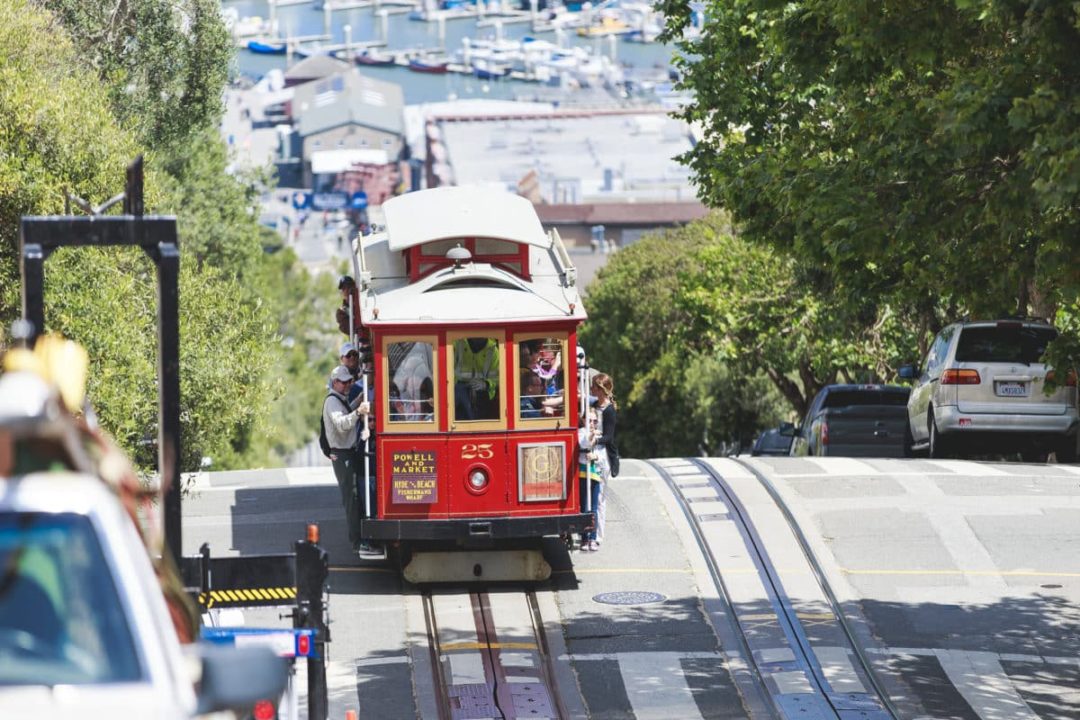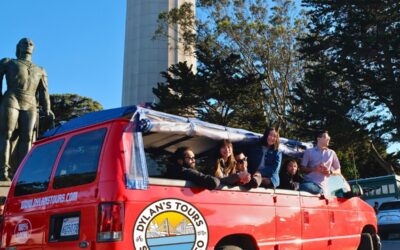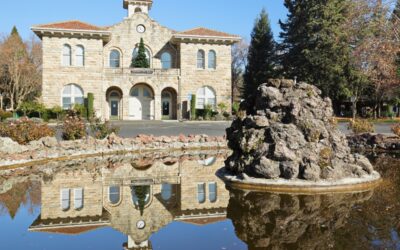San Francisco’s Chinatown offers you an authentic journey into the heart of Chinese-American culture. As the largest Chinatown in North America — and the oldest Chinatown in North America — this vibrant 24-block district pulses with energy from traditional Chinese dim sum restaurants, historic temples, and bustling markets that have served the community for over 175 years.
You’ll discover a neighborhood where deeply rooted traditions meet modern San Francisco life, creating experiences that reveal the real character of our city. From the ornate Dragon Gate entrance to hidden alleyways filled with the aroma of fresh fortune cookies, Chinatown connects you to stories of resilience, culture, and community that define authentic San Francisco.
Ready to experience Chinatown alongside San Francisco’s other iconic neighborhoods?
Join Dylan’s Famous Tour with Muir Woods, our most popular tour that shows you the real San Francisco. With 3,900 five-star reviews and counting, make the most of your time in San Francisco!
Book Dylan’s Famous Tour with Muir Woods
Why San Francisco Chinatown Captivates Visitors
San Francisco’s Chinatown represents the enduring spirit of a community that transformed a steep hillside into a cultural beacon. With almost 35,000 residents living within just 24 blocks, this neighborhood creates an energy that feels both distinctly and unmistakably San Franciscan — not just like another tourist attraction.
The numbers tell an impressive story: largest Chinatown outside of Asia, home to America’s oldest Chinese temple, and birthplace of the fortune cookie. The real magic happens in the daily rhythms of residents and the Asian American community who’ve called these streets home for generations, building a community that bridges heritage with contemporary San Francisco life.
This remarkable density creates something extraordinary. Elderly residents practice Tai Chi in Portsmouth Square while children play nearby. Traditional herb shops operate next to modern cafes. Cantonese conversations mix with English and Spanish, creating the multilingual symphony that defines authentic San Francisco.
The Remarkable History That Shaped the Chinatown Community
Chinese laborers began settling in San Francisco in 1848, drawn by Gold Rush opportunities and later by railroad construction work. Facing discrimination and violence in other neighborhoods, these early immigrants found safety and community around Sacramento Street, gradually building the foundation of what would become North America’s most significant Chinese enclave.
The community survived the 1906 earthquake and fire that devastated much of San Francisco, rebuilding with the distinctive architecture you see today. Residents designed buildings that honored Chinese aesthetics while meeting American building codes, creating the unique visual character that makes Chinatown instantly recognizable.
Through decades of exclusion laws, economic challenges, and social barriers, the community persevered and thrived. Today’s Chinatown district reflects this resilience, maintaining cultural traditions while embracing change and growth that keeps the neighborhood vibrant and relevant.
The evolution continues as new generations of Chinese Americans add their own chapters to this ongoing story, ensuring this iconic San Francisco neighborhood remains a living community rather than a static historical exhibit.
Must-Visit Attractions and Hidden Gems
Dragon Gate
The official entrance to this highly visited Chinatown welcomes you with traditional Chinese architecture and meaningful symbolism. This ornate Chinatown gate, gifted in 1969, displays the Chinese inscription “All under heaven is for the good of people.” The Dragon Gate serves as your introduction to a neighborhood where every detail carries cultural significance.
You’ll find this much-photographed landmark at the intersection of Grant Avenue and Bush Street, marking the beginning of your Chinatown exploration. The gate’s green tile roof and guardian lions represent prosperity and protection, themes that resonate throughout the neighborhood.
Tin How Temple
America’s oldest Chinese temple, founded in 1852, occupies the third floor of 125 Waverly Place. Dedicated to Mazu, the goddess who protects seafarers, this temple holds special meaning for Chinese immigrants who crossed oceans to reach San Francisco.
The temple welcomes visitors daily from 10am to 3pm with no admission fee, though donations support the temple’s maintenance. You’ll climb narrow stairs to reach the incense-filled sanctuary decorated with red lanterns, golden statues, and offerings of fresh fruit that create an atmosphere of reverence and community devotion.
Golden Gate Fortune Cookie Factory
Located in narrow Ross Alley, this small factory holds the distinction of being the first fortune cookie operation in the world. David Jung invented the fortune cookie in San Francisco in 1918, making this an authentic piece of local culinary history.
Watch workers fold warm cookies around paper fortunes while the sweet aroma fills the alley. The factory operates Monday through Friday from 9am to 6:30pm and weekends from 9am to 7pm, offering free samples and fresh cookies at incredibly reasonable prices.
Chinese Historical Society of America Museum
This museum transforms the former Chinatown YMCA into a cultural center that preserves and shares Chinese-American experiences. Rotating exhibits explore immigration stories, community traditions, and contemporary issues that affect Chinese Americans and Chinese culture today.
Adults pay $12 for admission while children, students, seniors, and military members pay $10. The museum operates Wednesday through Sunday from 11am to 4pm, providing context that enriches your understanding of everything else you’ll see in Chinatown.
Portsmouth Square
Known as the “Heart of Chinatown,” this small park serves as the community’s outdoor living room. You’ll see residents playing xiangqi (Chinese chess), practicing Tai Chi, and gathering for conversations that span generations and languages.
Children use the playground while grandparents supervise from nearby benches. The square hosts community events and provides green space in one of San Francisco’s most densely populated neighborhoods.
Food Culture That Defines the Neighborhood
Chinatown’s culinary landscape and Chinese restaurants offer you authentic flavors that transport you straight to different regions of China. The neighborhood’s restaurants serve everyone from homesick immigrants to curious food lovers, maintaining quality and tradition that keeps both groups returning.
Want to experience Chinatown’s incredible food scene along with the rest of San Francisco’s culinary diversity? Dylan’s Famous Tour with Muir Woods gives you insider perspectives on the city’s authentic neighborhoods before heading to the majestic redwoods.
Dim Sum Traditions
Traditional dim sum restaurants fill weekend mornings with the clatter of carts and animated conversations. Servers push steaming carts between tables, offering har gow (shrimp dumplings), siu mai (pork dumplings), and char siu bao (barbecue pork buns) that represent centuries of Cantonese culinary tradition.
The best dim sum experiences happen between 10am and 2pm when restaurants serve the widest variety of dishes. Don’t hesitate to point at dishes that look appealing, many servers speak English and enjoy helping curious diners discover new favorites.
Traditional Bakeries
Chinese bakeries throughout Chinatown offer sweet and savory treats that reflect both traditional recipes and creative adaptations. Dan tat (egg tarts) provide creamy custard in flaky pastry shells while pineapple buns (which contain no pineapple) offer sweet bread with crispy, golden tops.
Savory options include char siu bao and curry beef pastries that make perfect walking snacks as you explore the neighborhood. Prices remain remarkably affordable, often under $2 per item.
Tea Culture and Authentic Tea Houses
Traditional tea shops invite you to experience tea culture that goes far beyond simple beverage service. Knowledgeable proprietors guide you through varieties of oolong, pu-erh, and jasmine teas while explaining brewing techniques that maximize flavor and health benefits.
Many shops offer tea tastings where you can sample different varieties before purchasing. The ritual of proper tea preparation becomes a meditative experience that connects you to traditions spanning thousands of years.
Street Food and Market Experiences
Small markets and street-level vendors offer quick bites that fuel daily life in Chinatown. Fresh fruit stands sell exotic varieties you might not find elsewhere, while small restaurants serve noodle soups and rice dishes that provide substantial meals at budget-friendly prices.
The sensory experience includes sights, sounds, and aromas that create lasting memories. Vendors calling out prices in Cantonese, the sizzle of woks in small kitchens, and the sight of whole roasted ducks hanging in restaurant windows all contribute to Chinatown’s authentic atmosphere.
Shopping and Cultural Discoveries
Traditional Herb Shops
Chinese herb shops offer fascinating glimpses into traditional medicine practices that have sustained communities for millennia. Knowledgeable herbalists can explain the properties of dried roots, leaves, and other natural remedies that line the walls in labeled jars and drawers.
Even if you don’t purchase anything, these shops provide cultural education about holistic health approaches that differ significantly from Western medicine. The aromatic environment and careful organization of hundreds of ingredients create an almost museum-like experience.
Authentic Shopping Experiences
Beyond tourist-focused souvenir shops, Chinatown offers authentic stores that serve the local community. Traditional clothing shops sell silk garments and embroidered items created for special occasions and daily wear.
Kitchen supply stores offer specialized woks, bamboo steamers, and other cooking tools that enable authentic Chinese cooking at home. Prices often beat what you’d pay for similar items elsewhere, and the quality reflects tools designed for serious use.
Local Markets and Specialty Stores
Produce and fish markets offer vegetables, fruits, and ingredients essential to Chinese cooking but sometimes difficult to find elsewhere in the city. Vendors often provide cooking tips and recipe suggestions for unfamiliar items.
Specialty stores focus on specific products like imported teas, traditional candies, or handcrafted items that connect you to Chinese communities. The personal service and expert knowledge in these small shops enhance your shopping experience significantly.
Practical Tips for Exploring Chinatown
Best Times to Visit
Daytime visits between 10am and 4pm offer the fullest experience with all shops, temples, and restaurants operating at peak activity. Weekend mornings provide the best dim sum experiences but also bring the largest touristy crowds.
Evening visits after 6pm offer a different perspective as lanterns illuminate the streets and the tourist crowds thin out. Many restaurants remain open late, and the neighborhood takes on a more intimate, community-focused atmosphere.
Visiting Chinatown
Chinatown’s 24-block area allows for easy walking exploration, but the steep San Francisco hills can challenge unprepared visitors. Comfortable walking shoes become essential, and you should expect some moderate climbing as you move between different areas.
The main tourist corridor along Grant Avenue provides easy navigation, but the most interesting discoveries happen in smaller alleys and side streets. Stockton Street offers a more authentic local experience with markets and shops that primarily serve neighborhood residents.
Cultural Etiquette and Respectful Visiting
When visiting temples, remove hats and maintain quiet, respectful behavior. Photography restrictions vary by location, so ask permission before taking pictures, especially in temples and small shops.
In restaurants, don’t be surprised by brusque service styles that reflect efficiency rather than rudeness. Tipping follows standard American practices, typically 18-20% for table service.
How to Get to Chinatown: Transportation Options
Multiple Muni bus lines serve Chinatown, including the 1 California, 30 Stockton, 45 Union/Stockton, and 8 Bayshore. Cable cars provide a scenic route from Fisherman’s Wharf or Union Square, with stops at Washington/Jackson (Powell lines) or Kearny Street (California line).
Parking presents significant challenges with limited street spaces and expensive garage rates. If you drive, budget extra time for parking and consider using garages on the border between Chinatown and the Financial District.
Cable Car
This tourist attraction is an enjoyable way to get to Chinatown. You can board in Fisherman’s Wharf or Union Square. If you take the Powell-Hyde or the Powell-Mason line, you should get off at Washington and Jackson. The California Street line is also a perfect option. Get off at Kearny, and you are only two blocks away from Grant Avenue.
Dylan’s Famous Tour with Muir Woods
Make getting to Chinatown easy when you visit with Dylan’s Famous Tour with Muir Woods. Chinatown is just one stop on our award-winning tour that takes you to the heart and soul of San Francisco, including a visit to Muir Woods and optional Alcatraz add-on!
Annual Celebrations and Cultural Events
Chinese New Year
San Francisco’s Chinese New Year celebration ranks among the largest outside of Asia, transforming Chinatown into a festival destination that attracts visitors from around the world. The celebration extends for several weeks, culminating in a spectacular parade that winds through downtown San Francisco.
Traditional dragon and lion dances fill the streets during the Chinese New Year Parade while fireworks create dramatic displays that honor ancient traditions. Local restaurants offer special New Year menus, and shops display decorations that create a festive atmosphere throughout the neighborhood.
Street fairs feature traditional crafts, performances, and food vendors that provide authentic cultural experiences. The timing varies with the lunar calendar, typically falling between late January and early February.
Autumn Moon Festival
This mid-September celebration honors the harvest moon with parades, lion dancing, and live music that fills Portsmouth Square and surrounding streets. Traditional mooncakes, special pastries filled with sweet or savory ingredients, become available at bakeries throughout Chinatown.
The festival emphasizes family reunification and gratitude, themes that resonate strongly within the Chinese-American community. Cultural performances include traditional music and dance that provide entertainment while preserving cultural traditions.
Year-Round Cultural Programming
Community centers and cultural organizations host regular events including art exhibits, language classes, and cultural workshops that welcome both residents and visitors. The Chinese Historical Society offers lectures and special exhibits that explore different aspects of Chinese-American history and contemporary issues.
Traditional holidays throughout the year bring smaller celebrations that provide opportunities to witness authentic cultural practices. These events offer more intimate experiences than the major festivals while still providing meaningful cultural connections.
Planning Your Complete Chinatown Experience 
Time Allocation and Itinerary Planning
A thorough Chinatown exploration requires at least 3-4 hours to visit major attractions, sample food, and browse shops without feeling rushed. Full-day visits allow for multiple meal experiences and more extensive shopping and cultural activities.
Consider starting with historical attractions like the Dragon Gate and Tin How Temple, then transitioning to food experiences during appropriate meal times. Shopping and market exploration work well as afternoon activities when you have time to browse carefully.
What to Bring and Wear
Comfortable walking shoes become essential for navigating Chinatown’s hilly terrain and busy sidewalks. Weather-appropriate layers help you adapt to San Francisco’s changeable conditions, especially important if you plan to continue exploring other neighborhoods.
Bring cash for small vendors and traditional restaurants that may not accept credit cards. A small bag or backpack provides convenient storage for purchases and any temple etiquette requirements like removing hats.
Combining Chinatown with Other Neighborhoods
Chinatown’s central location makes it an excellent starting point for exploring other San Francisco neighborhoods. North Beach lies within walking distance, offering Italian-American culture that creates interesting cultural contrasts.
The Financial District provides modern urban experiences, while Union Square offers shopping and entertainment options. Each neighborhood contributes different elements to a complete San Francisco experience.
Making the Most of Your Cultural Immersion
Approach Chinatown with curiosity and openness to experiences that might differ from your expectations. Try foods you haven’t eaten before, visit temples even if you don’t share the religious traditions, and browse shops that serve the local community rather than just tourists.
Engage with shopkeepers and restaurant staff who often enjoy sharing knowledge about their products and traditions. These personal interactions create the most memorable experiences and provide insights you won’t find in guidebooks.
Ready to experience the complete San Francisco story?
Join Dylan’s Famous Tour with Muir Woods and discover how Chinatown connects to the city’s broader cultural tapestry, then escape to the magnificent redwoods for a day that captures both urban authenticity and natural wonder.
Our local guides share the insider stories and community connections that transform sightseeing into genuine cultural exploration, showing you the real San Francisco that exists beyond the headlines and stereotypes.
Book Dylan’s Famous Tour with Muir Woods today.
